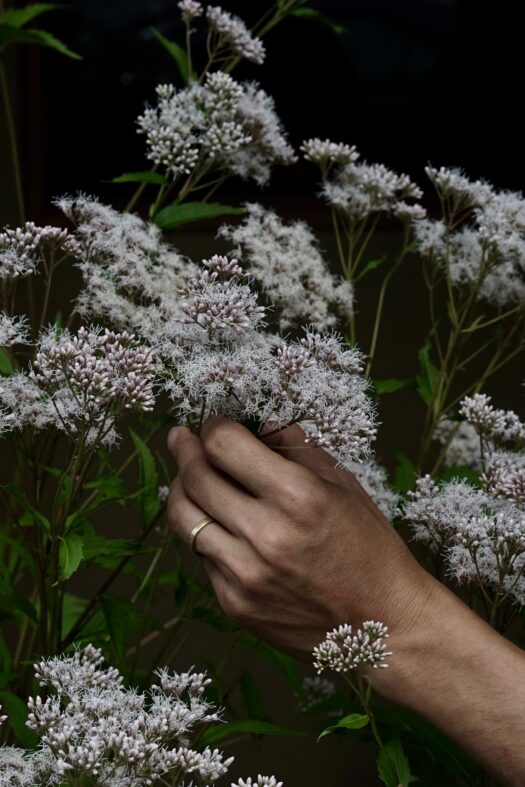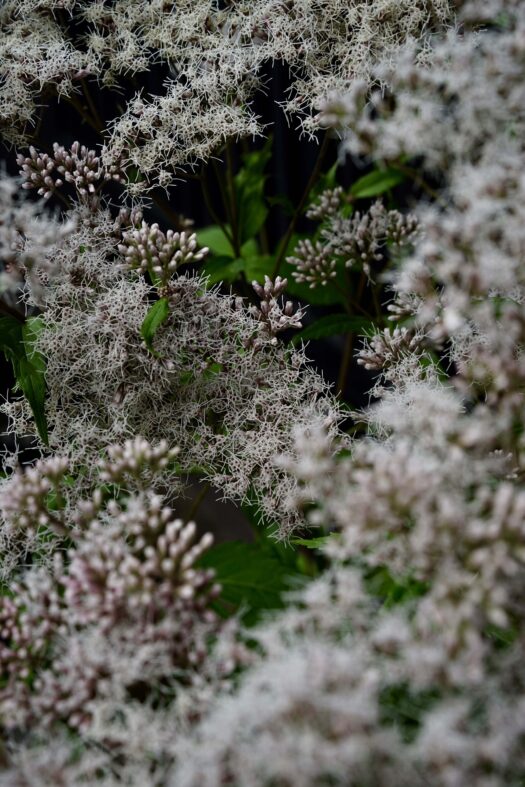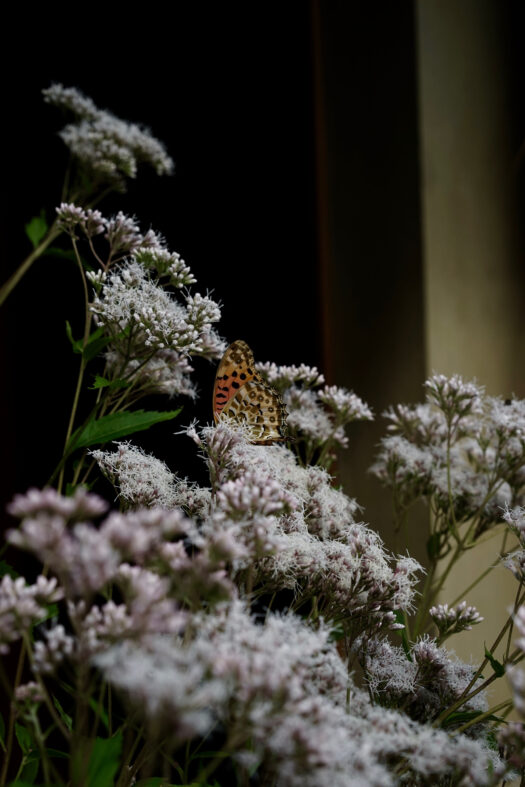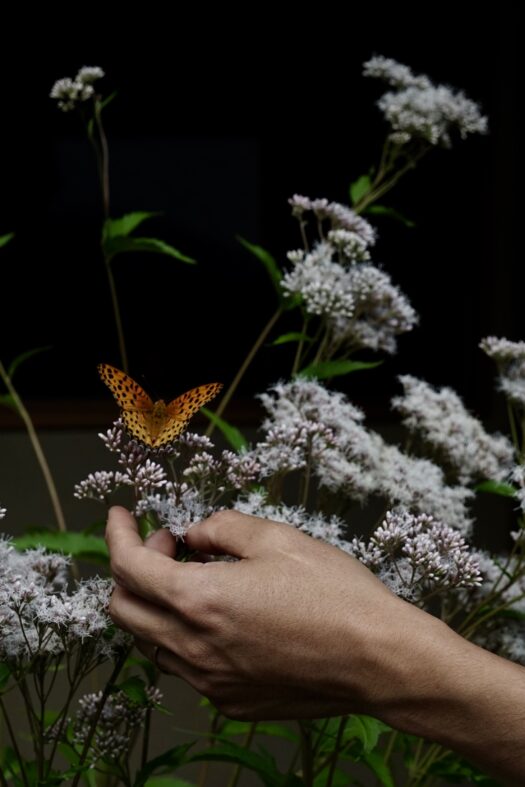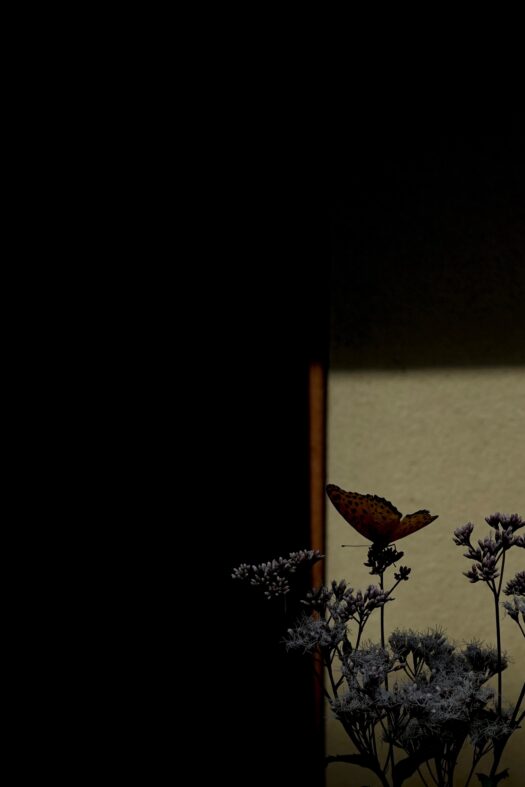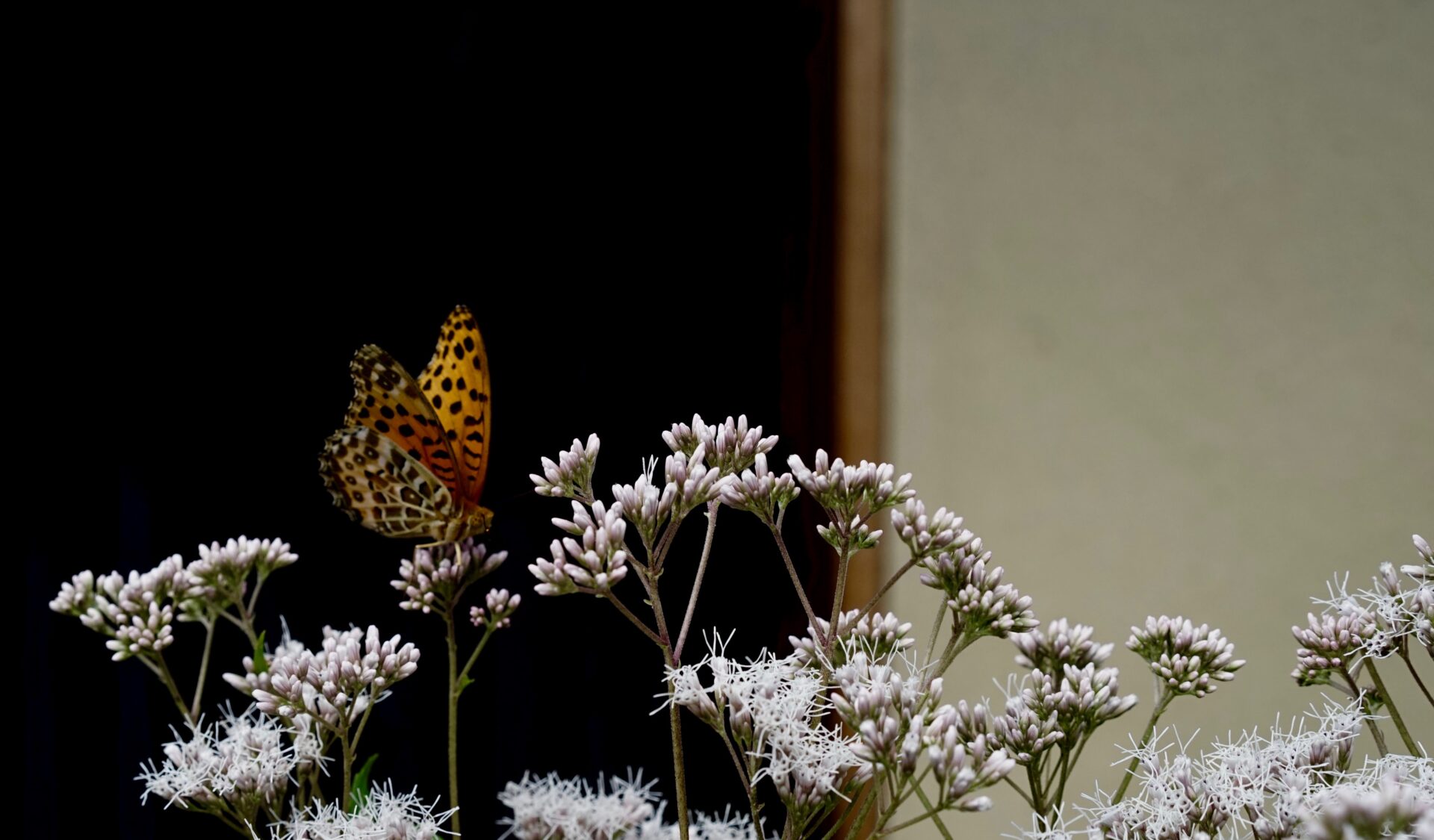
10 27 2021
Kyoto
Hayato & Mika Nishiyama
from Mitate
フジバカマは、キク科ヒヨドリバナ属の多年草。秋の七草の一つに数えられ、花の色が藤色を帯び、花弁の形が袴のようであることから「藤袴」の名がつけられたという。
古くは「蘭」と記され、日本書紀に始まり万葉集や古今集にもたびたび登場し、親しまれてきた。
しかし今日では、近年の地球環境の変化によってその数を減らし、絶滅の恐れがある「準絶滅危惧種」に指定されている。
写真のフジバカマは、草根木皮を原料とした薫香を製造販売する「松栄堂」より育てられたもので、希少植物の生育域外保全活動として京都市内の寺院など数カ所に100鉢ほどのフジバカマが配られ、毎年鑑賞されている。
9月の終わりになると、みたてにもそのうちの2鉢が届けられ、ちょうどいま見頃を迎えている。
葉をよく乾燥させると、甘さのある桜餅のような香りがし、その葉は利尿、下熱、冷え性等の漢方にも使われるという。花の満開時にもその香りに引き寄せられて、渡り蝶であるアサギマダラが飛来することがある。
「浅葱」とは青緑色の古称で、羽の色に由来する。アゲハチョウのような大きな翅を羽ばたかせ、秋には日本本土から南西諸島や台湾への渡り個体が多く発見されている。
みたてのフジバカマにも時々立ち寄ってくれるアサギマダラ。カメラを構えた今日は姿を見せてくれなかった。代わりに寄ってきたツマグロヒョウモンは、アサギマダラほどの美しさこそないが、人懐こく、手を近づけても逃げようとしない。
花の生態を調べたり、虫や蝶の観察をしたりと、あっという間に時間が流れていく。こうしてまた仕事の手がとまるのだ。
Fujibakama, the perennial plant of the genus Hydrangea in the Asteraceae family, is one of the Seven Flowers of Autumn indigenous to Japan. The name is said to have derived from its wisteria-red ‘fuji’ color flowers and its hakama-like petals. In ancient times, it was classified as an orchid and was often mentioned in the Japanese Chronicles as well as in the Manyoshu and Kokinshu. In recent years, the plant has seen a decrease due to changes in the global environment and is designated as a quasi-endangered species.
Shoei-do, a company that manufactures and sells incense from herbaceous roots and bark, grows Fujibakama as a part of an effort to preserve rare plants outside of their habitat. Every September, they distribute 100 or so pots of Fujibakama to temples and various places around Kyoto, in which two of them were delivered to Mitate for us to enjoy at its fully bloomed state around this time of the year.
Its dried leaves give out a sweet cherry blossom cake-like aroma and are often used in Chinese medicine as a diuresis, to lower fever and increase blood circulation. When the flowers are in full bloom, the fragrance often attracts the migratory Asagimadara butterfly. ‘Asagi’ is a traditional name for the blue-green color of the butterfly’s wings. They have large wings similar to swallowtail butterflies, and many migrate from Japan to the Nansei Islands and Taiwan in the autumn time.
From time to time, we can enjoy the Asagimadara butterflies visiting our Fujibakama flowers, although they decided not to show up for me when I had my camera ready today. Instead, an Indian fritillary butterfly came for a visit, and although its beauty is not comparable to the Asagimadara butterflies, they were camera-friendly and stayed even when I approached them.
Time flew by as I studied the ecology of the flowers and observed the insects and butterflies, and moments like this are why I get distracted from getting work done.




